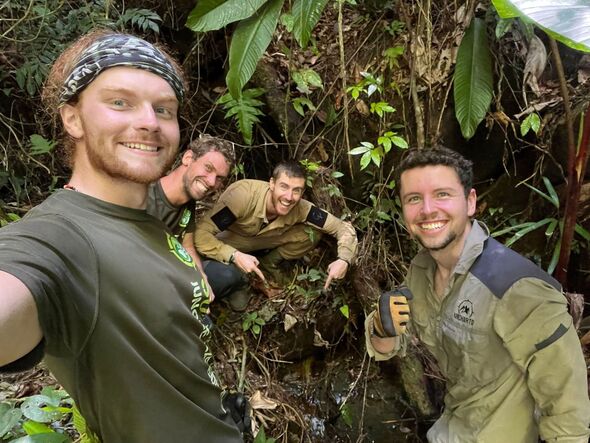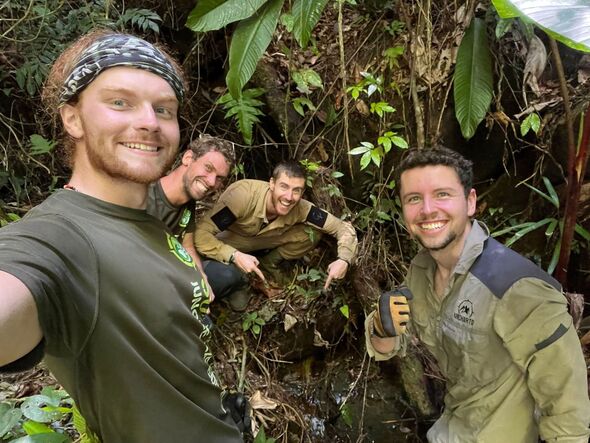
Ash Dykes was accompanied by fellow explorers Jacob Hudson, Dick Lock, and Matt Wallace (Image: Ash Dykes/SWNS)
A British explorer has successfully pinpointed the origin of a previously unmapped Amazonian river, all while navigating treacherous terrain and fending off jaguar stalkers and swarms of biting insects.
Ash Dykes, a fearless adventurer, was overjoyed upon discovering the source of the Coppename River in Suriname, accompanied by fellow explorers Jacob Hudson, Dick Lock and Matt Wallace.
The group’s remarkable feat was followed by a record-breaking ascent of Julianatop, Suriname’s highest mountain, which they accomplished in record time.
During their expedition, the team also stumbled upon two previously undocumented waterfalls, which they aptly named ‘Dykes Falls’ and ‘Wallace Falls’ in honour of the team members who first laid eyes on them in the largely uncharted jungle.
Reflecting on their incredible achievement, Ash exclaimed: “It feels crazy to find the source… We were all screaming and getting excited.
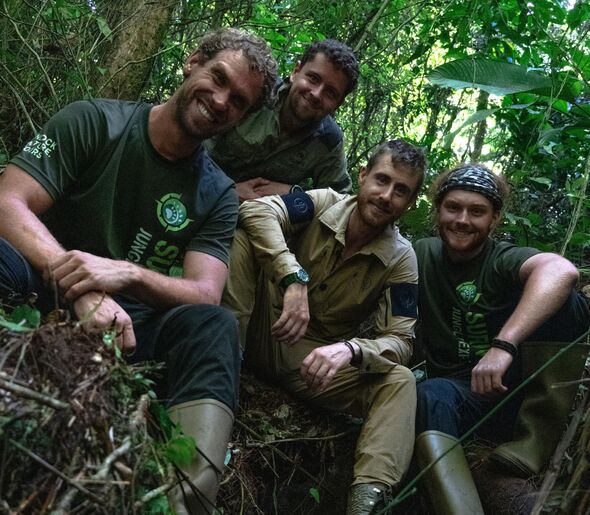
The team also stumbled upon two previously undocumented waterfalls (Image: Jacob Hudson/SWNS)
“We’ve mapped the coordinates and took a screenshot for any mapping associations who want that.
“It is crazy to think that we are going to some places that the forest hasn’t ever seen a human footprint before. And it’s not surprising… It is brutal in the jungle.”
Ash, 33, originally from St Asaph, Wales, but now residing in London, embarked on this perilous journey on August 29, venturing into the heart of the former Dutch colony, which boasts an impressive 93% forest cover.
He and his team spent the next six days battling their way upstream in kayaks, lugging 50kg of supplies, while enduring the wrath of 300 ticks and vicious army ants.
The group encountered a massive goliath tarantula, the world’s largest spider, as well as snakes and ferocious caimans.
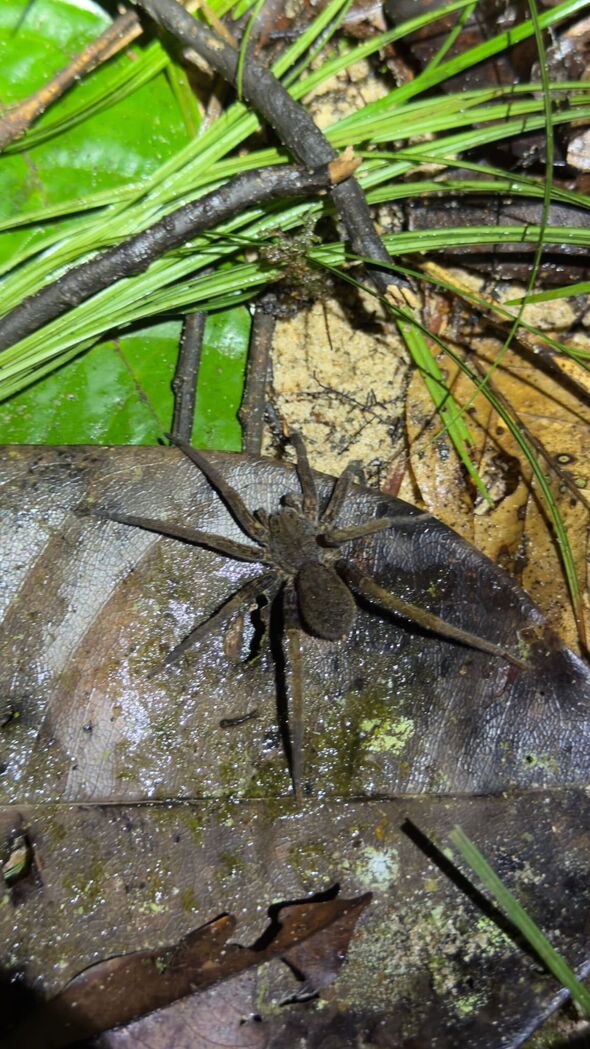
The group encountered a massive goliath tarantula (Image: Ash Dykes/SWNS)
However, Ash revealed that the most unsettling moment occurred when they woke up to find fresh jaguar droppings mere yards from their makeshift camp, where they had been sleeping in hammocks covered with tarpaulin.
He recounted: “A jaguar must have entered through our camp. We couldn’t see it, but who knows how long it was potentially following us for, following our tracks to camp. Seeing jaguar poo…was pretty creepy.
“We had a scorpion enter the camp, Jacob almost stood on it. We also had army ants just take over our camp completely. They were all over our hammocks and our tarp, and they made four grown men stand at the side of the river bank, waiting for them to pass. Jacob got hit by them… He got bitten, he had ants in his pants.”
Ash, an extreme athlete, shared that the team had been surviving on approximately 500-600 calories per day, consuming ration packs and wolf fish caught in the river. However, they had suffered injuries, including cuts and bruises, from trekking for up to 16.5 hours through the jungle and navigating fast-flowing river rapids.
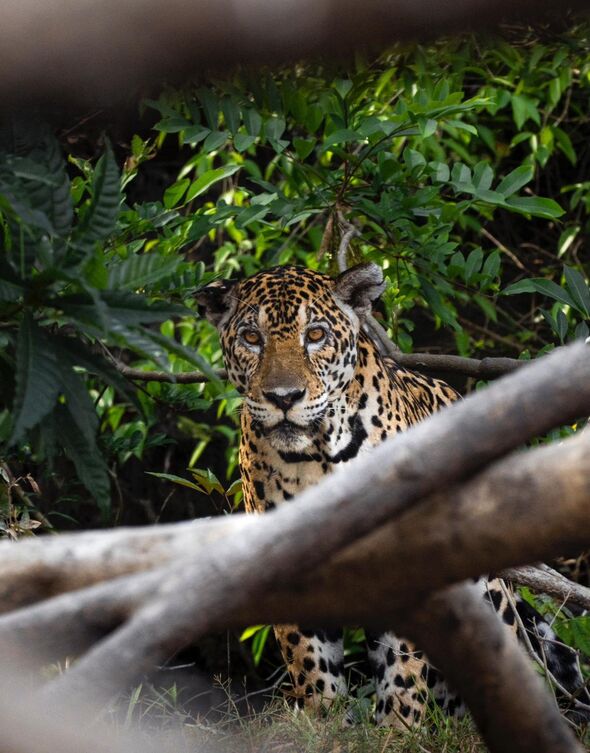
Ash revealed the most unsettling moment was waking up to find fresh jaguar droppings (Image: Jacob Hudson/SWNS)
Ash’s feet had taken a severe beating, resulting in the loss of three toenails during the grueling initial leg of their journey. Despite the challenges, the team was thrilled to have discovered and named two waterfalls as they ventured towards the source of the Coppename River.
Ash revealed: “We were pretty cut open and bruised for the majority of the first two days, and that’s when we came across an undiscovered waterfall – called ‘Wallace Falls’. Matt Wallace, who was the team expedition member who saw it first, he claimed it and named it.
“It’s a big 15m falls that stopped us in our tracks. It’s not on any GPS, it hasn’t been mapped. We discovered a smaller falls right near the source, which I named ‘Dykes Falls’, and that one is even more remote. It’s probably about 100m from the source of the Coppename River.”
In a thrilling account of his journey through Suriname’s largely uncharted wilderness, Ash has documented coordinates of these remarkable discoveries, noting that such exploration has scarcely occurred since Victorian times due to the perils of disease and injury.
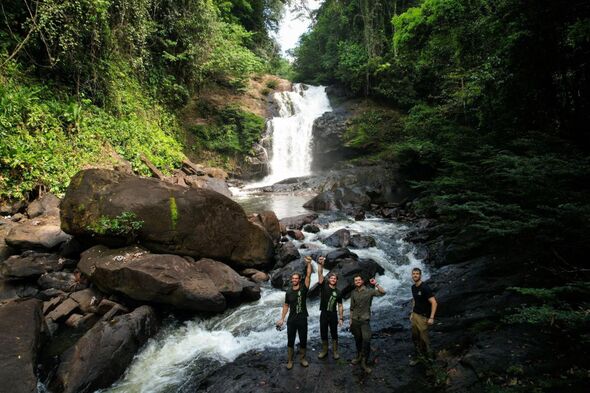
The team spent six days battling their way upstream in kayaks (Image: Jacob Hudson/SWNS)
He expressed awe at the sheer isolation of their location, saying: “It’s crazy remote here. We’ve not seen another human at all or any signs of another human.” We probably won’t for at least another two to three weeks. We’ll probably go a month without seeing any human activity. It’s very wild.”
Ash will now travel from the source of the Coppename River to its mouth – in an epic journey which could take another 40 days. Moreover, the team is aiming to shatter another world record by ascending Suriname’s second-highest peak in record time.
Ash, already a holder of three world records from his previous adventures in Mongolia, Madagascar, and China, confessed his passion for engaging in such gruelling physical endeavours. He expressed: “I kind of think it’s almost in my DNA. There’s no dark or bad upbringing story.
“But after the Yangtze, which was my third world record, I thought I’d never come across a genuine world first again. This is one of those where we’re being thrown back in time. I didn’t expect to experience something like this in the 21st century – with expeditions taking place in the 1800s.”
